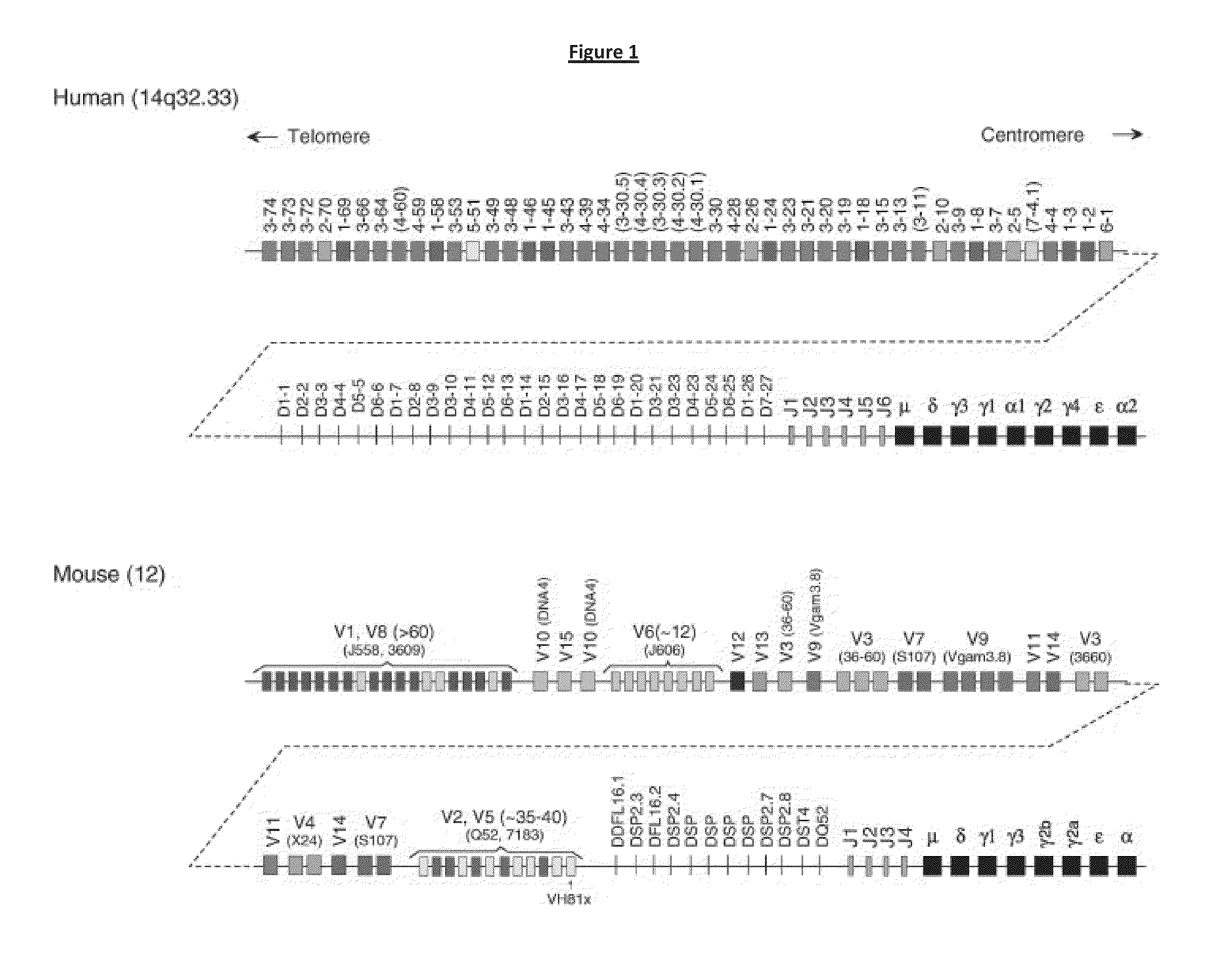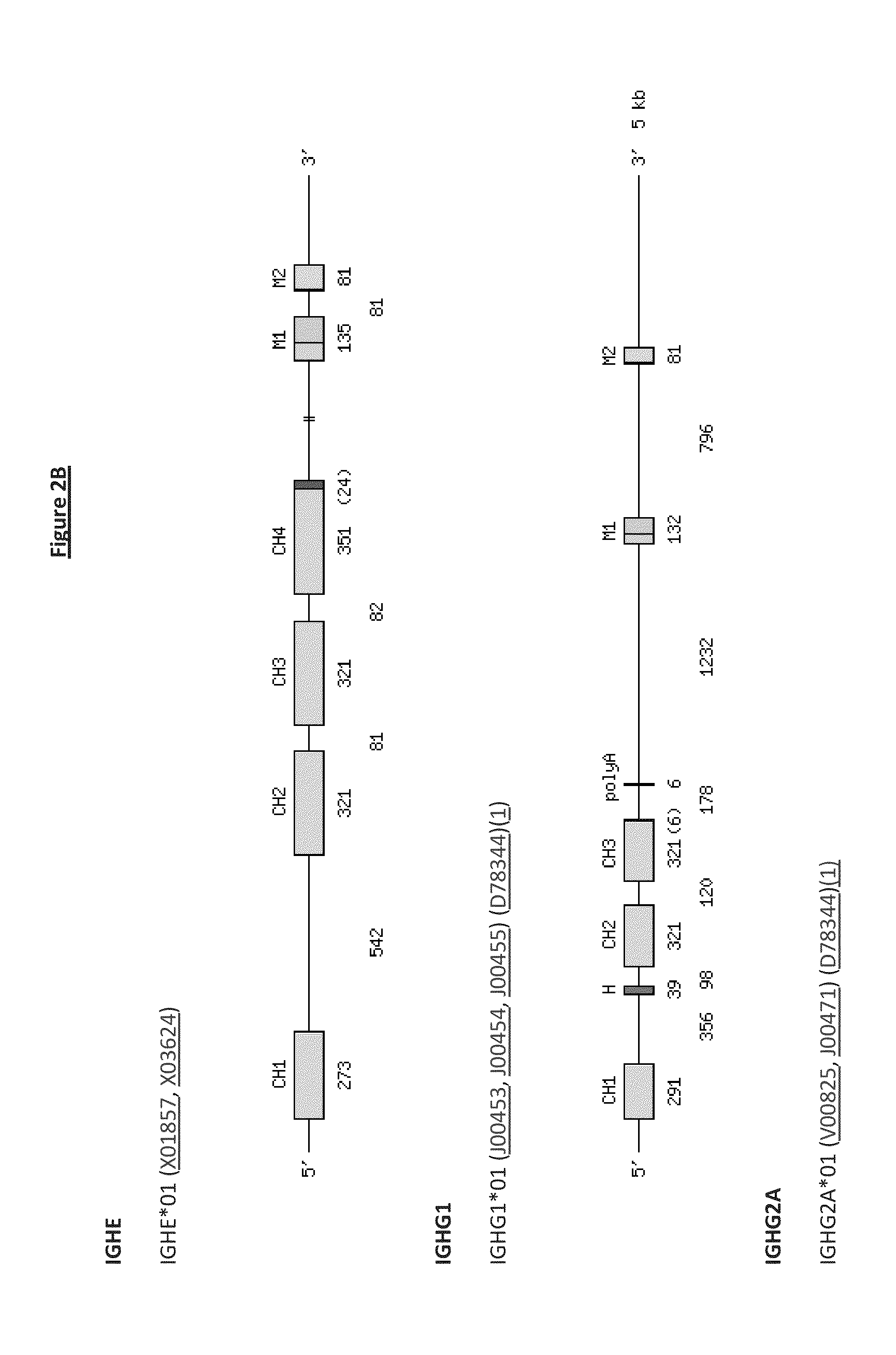Transgenic Non-Human Vertebrate for the Expression of Class-Switched, Fully Human, Antibodies
a non-human, fully human technology, applied in the field of transgenic non-human vertebrate for the expression of fully human, class-switched, antibodies, can solve the problems of reducing the desirable characteristics of the resultant antibody, reducing the utility of generating antibodies in vitro, and relatively small b-cell compartments
- Summary
- Abstract
- Description
- Claims
- Application Information
AI Technical Summary
Benefits of technology
Problems solved by technology
Method used
Image
Examples
example 1
Recombineered BAC Vectors to Add Human C Gene Segments to the Mouse Genome
[0315]Methods of replacing endogenous antibody gene segments with corresponding human gene segments harboured by BACs are generally known in the art, eg, as disclosed in WO02066630, WO2011163311 & WO2011163314 (Regeneron). These methods use standard homologous recombination. As an alternative, recombinase mediated cassette exchange (RMCE; see WO2011004192 & WO2011158009 (Kymab Limited)) can be used with cre-lox-mediated, transposon-mediated (eg, using piggyBac) or homologous recombination-mediated deletion of endogenous non-mu constant region sequences, in order to replace endogenous non-mu with human constant region gene segments.
[0316]Modified BACs with human C gene segments, for example created using the methods described in Example 1, can be used to alter the genome of non-human mammals (eg, mice or rats). These alterations can result in an intact Ig heavy chain locus in which normal immunoglobulin gene se...
example 2
Adding Human C Gene Segments to A Non-Human Vertebrate Genome using SRMCE of Modified BACs
[0321]As mentioned above, one technique to integrate modified BACs with human C gene segments into a genome is sequential recombinase mediated cassette exchange (sRMCE). The technique is described in WO2011004192 (Kymab Limited), which is incorporated here in its entirety by reference.
[0322]sRMCE provides for a locus modified with a ‘landing pad’ inserted at a specific location. This insertion can either be de novo via homologous recombination or as a consequence of a previous BAC insertion. In this example, the landing pad is inserted in the mouse IgH locus (in a mouse ES cell) 3′ of the mouse C-mu region. In the present example, the insertion is between the mouse C-mu and mouse C-gamma regions (eg, between mouse Cmu and Cdelta or between mouse Cdelta and mouse gamma-1). Using standard sRMCE with serial BACs, a human gamma-1 constant region is built up in the genome of the ES cell (and optiona...
PUM
| Property | Measurement | Unit |
|---|---|---|
| pharmaceutical composition | aaaaa | aaaaa |
| affinity | aaaaa | aaaaa |
| AFFINITY | aaaaa | aaaaa |
Abstract
Description
Claims
Application Information
 Login to View More
Login to View More - R&D
- Intellectual Property
- Life Sciences
- Materials
- Tech Scout
- Unparalleled Data Quality
- Higher Quality Content
- 60% Fewer Hallucinations
Browse by: Latest US Patents, China's latest patents, Technical Efficacy Thesaurus, Application Domain, Technology Topic, Popular Technical Reports.
© 2025 PatSnap. All rights reserved.Legal|Privacy policy|Modern Slavery Act Transparency Statement|Sitemap|About US| Contact US: help@patsnap.com



